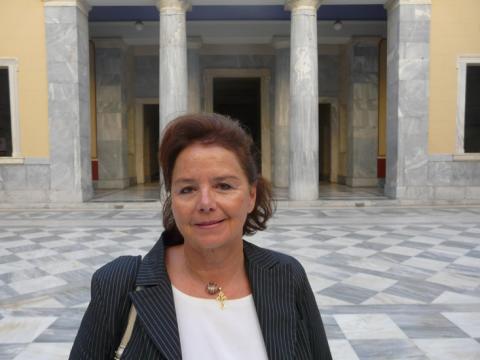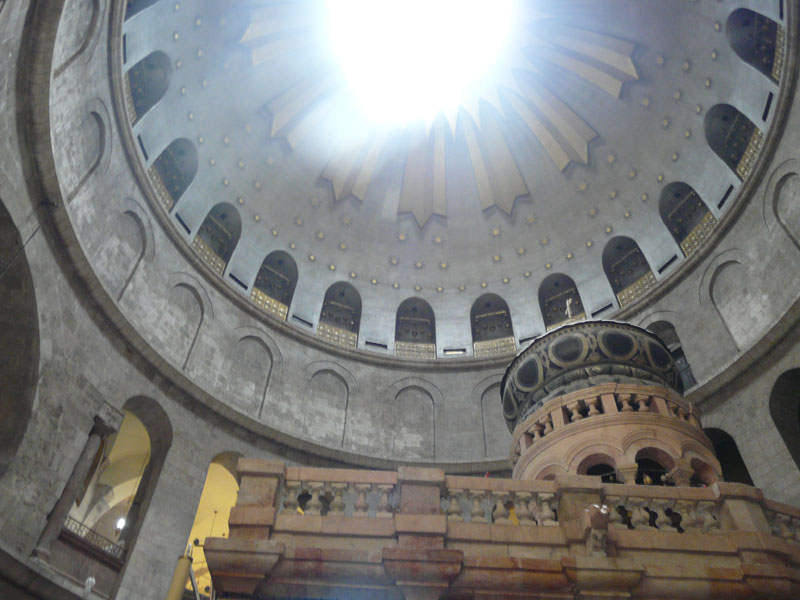
The courtyard of the Church of the Holy Sepulcher in Jerusalem, Israel (National Geographic/Crispin Green)
National Geographic's new hour-long documentary "The Secrets of Christ's Tomb" reveals some fascinating new information about the Church of the Holy Sepulcher in Jerusalem. The key discovery adds to the level of certainty that the church is built over the stone "bed" where Jesus was buried after his crucifixion nearby.
The story starts in 2016 with the imminent collapse of the Edicule, or "little house," erected more than two hundred years ago over what is believed to be the burial site within the church. The Edicule has been rebuilt many times (the church itself was destroyed in 1009 and rebuilt) since the time of Constantine. Now in danger of collapsing on pilgrims, the three religious groups that control the Church of the Holy Sepulcher, Armenian Apostolic Christians, Greek Orthodox Christians and Roman Catholics (Franciscans), are forced to agree on repairs to the Edicule, or have the church closed. Something called the "status quo," an agreement governing how the three groups work together, dictates that all groups must consent before any work is done or any changes made.
The film points out that this is not easily done. A ladder that was placed on an upper level porch of the church, or an attached building, has been there for over 200 years because the groups still cannot agree on taking it down. And this, at the holiest site in Christendom! The grim-looking faces of the religious men who must make the decision creates a curious dissonance between their role and the Christianity they represent. Perhaps that they are trying to preserve this holiest of sites in the contested city of Jerusalem adds to their somber visage.
Advertisement

Antonia Moropoulou (National Geographic/Crispin Green)
Professor Antonia Moropoulou, chief scientific supervisor at the National Technical University of Athens, and her interdisciplinary team are engaged to do the work, and they find the condition of the Edicule much more serious than thought. They have been given an almost impossible task: to complete the work in nine months, in time for Easter.
Using the latest scientific technology, such as ultrasound and ground penetrating radar, they are able to see the damage and plan for the extensive and very innovative repairs.
When they are almost ready to shoot concrete into a web of veins they have identified or created to shore up the Edicule, they realize that the marble slabs over the sacred stone "bed" in the tomb may well be compromised — and the concrete might leak into it. This means they must remove the slabs covering it to plan on the best way to proceed without destroying anything. Once again, the three religious groups must agree, and what is discovered will probably inspire many more people to make a pilgrimage to this holy site.
What they discovered when they moved the slabs really moved me.

The courtyard of the Church of the Holy Sepulcher (National Geographic/Crispin Green)
As the work was being done, National Geographic filmed the Edicule and its environs in 3-D. This allows scientists to detect any changes through movements of the earth and address them to avert a crisis. This also allowed the NatGeo team to create a virtual reality tour of the Church of the Holy Sepulcher, an exhibition that is already open at the National Geographic Museum in Washington, D.C., and runs until August 2018.
The documentary lives up to NatGeo's high production quality standards and builds the drama quite well: a holy place about to collapse, religious people who do not often agree, and an almost impossible deadline. Whether intended or not, the film is a remarkable testament to the compatibility of science and faith.
For more information visit https://news.nationalgeographic.com.
[Sr. Rose Pacatte, a member of the Daughters of St. Paul, is the director of the Pauline Center for Media Studies in Los Angeles.]





